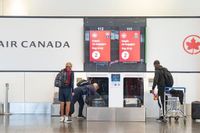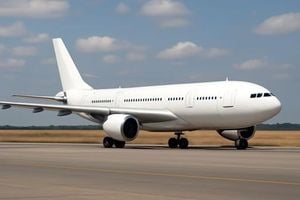Air Canada’s operations are slowly returning to normal after a historic strike by its flight attendants brought much of the airline’s network to a halt and left hundreds of thousands of travelers stranded across North America and beyond. The walkout, which began in the early hours of Saturday, August 17, 2025, saw around 10,000 flight attendants—represented by the Canadian Union of Public Employees (CUPE)—walk off the job in a dramatic push for better wages and compensation for unpaid work. The strike, which lasted several days, caused the cancellation of more than 700 flights per day, according to data from FlightAware, and left a trail of disruption that will take days to fully clear.
By Tuesday, August 19, 2025, a tentative agreement had been reached between Air Canada and CUPE, marking what union spokesperson Hugh Pouliot called a “transformational change for our industry after a historic fight to affirm our Charter rights.” In a statement reported by CNN, Pouliot declared, “Unpaid work is over. We have reclaimed our voice and our power.” The sense of victory was palpable among union members, though the deal still requires ratification in a membership vote. If the agreement is rejected, the strike could resume, leaving the airline and its customers facing renewed uncertainty.
The road to resolution was tense and, at times, politically charged. The strike unfolded despite a back-to-work order issued by the Canadian Jobs Minister on its very first day. Nevertheless, the union’s members, who had voted an overwhelming 99.7% in favor of the strike, walked out at around 1 a.m. ET on August 17, undeterred by government intervention. Their demands centered on wage increases and compensation for the many hours of work performed while aircraft are grounded—tasks such as safety checks, medical emergencies, and assisting passengers with boarding and deplaning, which had long gone uncompensated.
The numbers behind the union’s grievances are stark. Since 2000, inflation in Canada has driven prices up by 169%, and average full-time wages have risen 210%. Yet, according to CUPE, entry-level flight attendants at Air Canada have seen their hourly pay increase by just 10%—a mere $3 per hour—over the past 25 years. For many, it was a situation that could no longer be tolerated, especially as the cost of living continues to climb and the airline industry rebounds from pandemic-era turbulence.
The impact of the strike was immediate and far-reaching. More than 700 flights were canceled daily at the height of the disruption, stranding hundreds of thousands of passengers and leaving airports across Canada and the United States in disarray. Even after the tentative agreement was reached, the effects lingered. FlightAware recorded over 500 additional cancellations on August 19 and more than 160 on August 20, underscoring just how complex it is to bring a global airline’s operations back online after such a large-scale stoppage.
Air Canada, for its part, acknowledged the hardship faced by its customers. In a statement issued Tuesday, the airline said, “The suspension of our service is extremely difficult for our customers. We deeply regret and apologize for the impact on them of this labour disruption. Our priority now is to get them moving as quickly as possible.” The company advised that only passengers with confirmed bookings on flights shown as operating should come to the airport, a clear indication that the path to full recovery would not be immediate.
Indeed, the process of resuming service is proving to be a logistical challenge. According to Air Canada’s chief operations officer Mark Nasr, the restart is particularly slow for international routes. Before the strike, the airline had brought many crews back to Canada, meaning that, when operations resumed, staff were not yet in place overseas. As a result, while 97% of domestic flights and 99% of U.S. flights were expected to operate on August 21, only 76% of international flights were projected to take off. Nasr explained earlier in the week that it could take up to 10 days for service to return to normal levels across both Air Canada and its low-cost subsidiary, Air Canada Rouge.
To help ease the pain for those affected, the airline introduced a new policy on August 20, promising to reimburse certain customers who had booked alternative transportation in lieu of canceled Air Canada flights between August 15 and August 23. This move, first reported by The Canadian Press, was seen as a gesture of goodwill at a time when customer frustration was running high.
The strike’s timing was particularly fraught, coming during the busy late-summer travel season when families, business travelers, and tourists alike rely on Canada’s flagship carrier to connect them across the continent and around the world. About half of Air Canada’s flights are domestic, with the rest split between the United States and international destinations, according to aviation analytics firm Cirium. The disruption rippled through the airline’s vast network, affecting not just direct passengers but also those with connecting itineraries and cargo shipments.
Behind the scenes, the path to a deal was anything but smooth. Negotiations had stalled until Monday night, August 18, when the two sides returned to the table for the first time since the strike began. The urgency was clear: with each passing day, the costs—in both financial and reputational terms—mounted for Air Canada. For the union, the risk was equally high; public support can quickly wane if labor actions drag on and travelers’ patience wears thin.
Still, the union’s leadership framed the outcome as a major win not just for Air Canada’s flight attendants but for workers across the airline industry. The tentative agreement, they said, addresses long-standing issues of unpaid labor and wage stagnation, setting a new standard for fairness and respect on the job. “Flight attendants at Air Canada and Air Canada Rouge have reached a tentative agreement, achieving transformational change for our industry after a historic fight to affirm our Charter rights,” Pouliot emphasized in his statement.
Yet, the story isn’t quite over. As union members prepare to vote on the deal, the possibility of renewed unrest still hangs in the air. For now, most of Air Canada’s North American routes are back up and running, and the airline is working around the clock to restore its full schedule. But for many travelers—and for the thousands of flight attendants who took a stand—this summer’s strike will be remembered as a watershed moment in the ongoing struggle for fair pay and recognition in the skies.
As Air Canada’s planes gradually return to the air, both the airline and its employees are left to reckon with the lessons of a turbulent week—one that tested the limits of patience, solidarity, and the power of collective action.






